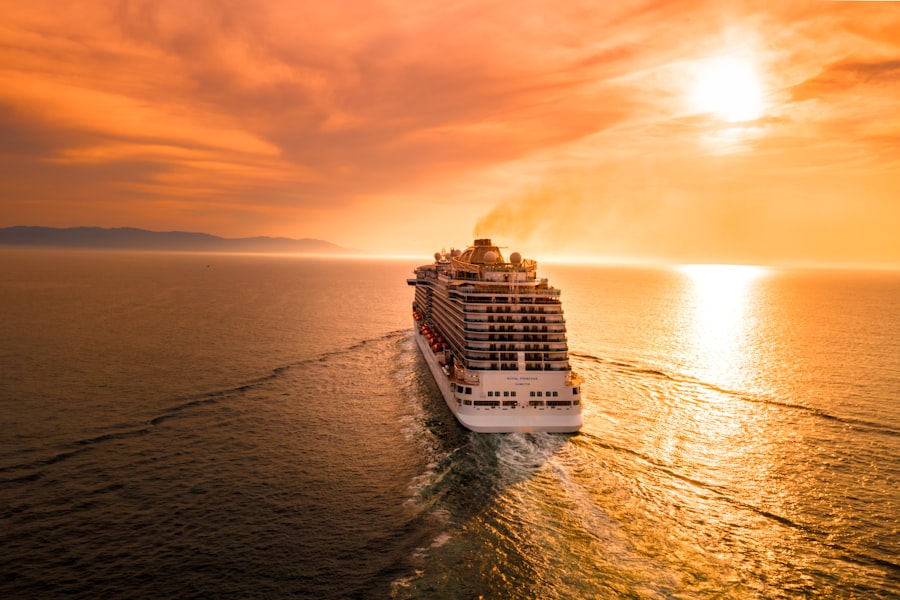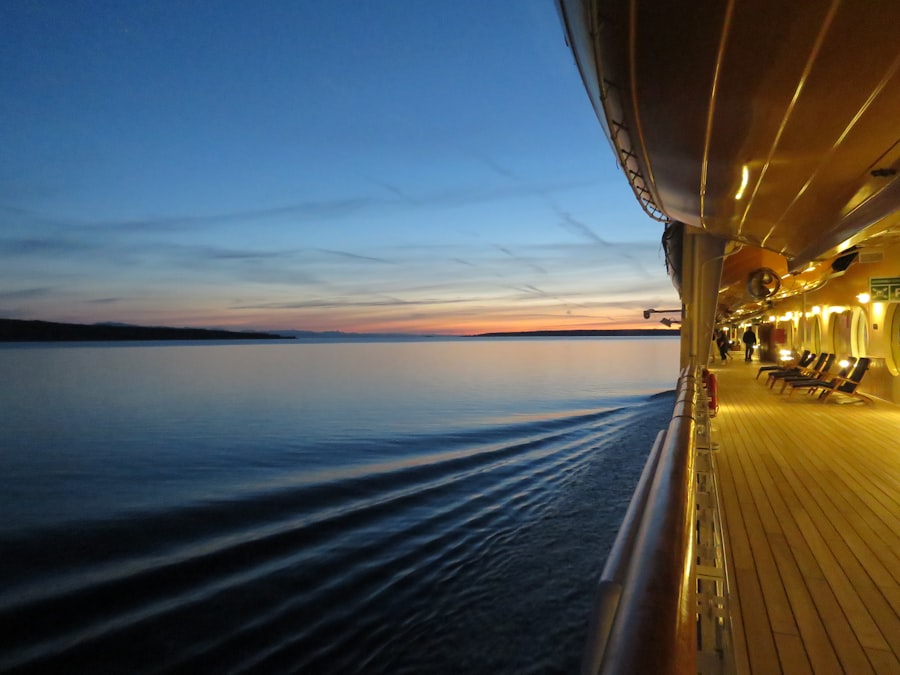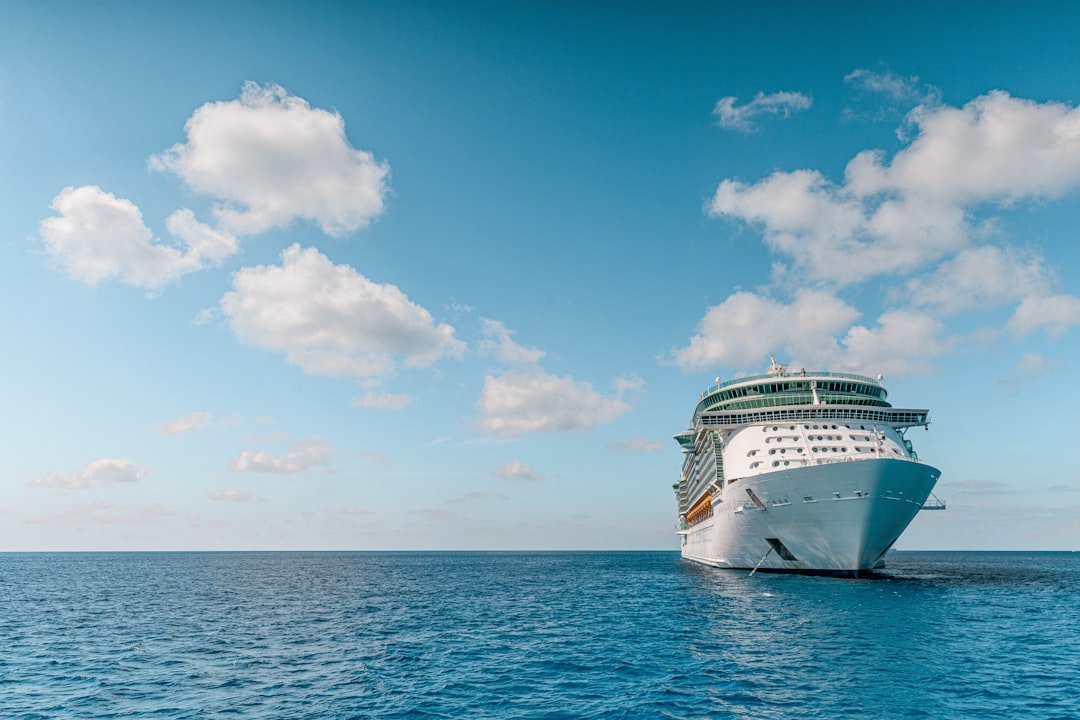The Drake Passage, a body of water that separates South America from Antarctica, is renowned for its unpredictable weather and tumultuous seas. This stretch of ocean is often regarded as one of the most challenging maritime routes in the world, yet it also serves as a gateway to one of the planet’s last great wildernesses. For adventurers and nature enthusiasts alike, the journey through the Drake Passage is not merely a means to an end; it is an experience that tests one’s resolve while offering breathtaking views and unforgettable encounters with wildlife.
Navigating the Drake Passage can be a daunting prospect, with its notorious reputation for rough seas and sudden storms. However, those who brave the journey are often rewarded with a sense of accomplishment and awe. The passage is a vital ecological corridor, teeming with marine life and offering glimpses of the majestic landscapes that define Antarctica.
As travelers embark on this voyage, they find themselves immersed in the raw beauty of nature, where the challenges of the journey become part of the adventure itself.
Key Takeaways
- The Drake Passage is a challenging but rewarding journey for those seeking an Antarctic adventure.
- Choosing the right cruise is crucial for a comfortable and enjoyable experience in the Drake Passage.
- Navigating the Drake Passage can be unpredictable, but passengers can expect stunning scenery and wildlife sightings.
- Packing smartly with layers, waterproof gear, and essentials is key for a cruise to Antarctica.
- Wildlife spotting in the Drake Passage offers opportunities to see penguins, whales, and seabirds in their natural habitat.
Choosing the Right Cruise for Your Antarctic Adventure
Selecting the right cruise for an Antarctic adventure is crucial for ensuring a memorable experience. With numerous options available, travelers must consider various factors such as the duration of the trip, the size of the vessel, and the amenities offered on board. Some cruises focus on luxury and comfort, providing spacious cabins and gourmet dining, while others prioritize exploration and adventure, featuring smaller ships that can navigate closer to icebergs and wildlife.
In addition to comfort and amenities, potential travelers should also evaluate the itinerary of each cruise. Some itineraries may include extended stays in certain locations, allowing for more in-depth exploration of the Antarctic landscape and wildlife. Others may offer unique excursions such as kayaking or ice climbing, catering to those seeking an active adventure.
By carefully considering these aspects, travelers can choose a cruise that aligns with their interests and expectations, ensuring a fulfilling journey through one of the world’s most remote regions.
What to Expect When Navigating the Drake Passage

Travelers embarking on a cruise through the Drake Passage should prepare for a variety of experiences, both exhilarating and challenging. The passage is known for its unpredictable weather patterns, which can shift rapidly from calm to stormy conditions. As such, passengers may encounter rough seas that can lead to a bumpy ride.
However, this unpredictability is part of what makes the journey so thrilling; it offers a true sense of adventure as travelers navigate through one of nature’s most powerful environments. In addition to the physical challenges posed by the Drake Passage, passengers can also expect to be captivated by the stunning scenery that unfolds around them. The vast expanse of ocean is often dotted with icebergs and seabirds, creating a picturesque backdrop for the journey.
As travelers sail through these waters, they may also have the opportunity to spot whales and other marine life, adding an element of excitement to their crossing. Ultimately, navigating the Drake Passage is an experience that combines both challenge and beauty, leaving a lasting impression on all who undertake it.
Packing Tips for a Cruise to Antarctica
| Tips for Packing for a Cruise to Antarctica |
|---|
| 1. Layered Clothing |
| 2. Waterproof Gear |
| 3. Insulated Boots |
| 4. Sun Protection |
| 5. Camera and Binoculars |
| 6. Medications and First Aid Kit |
| 7. Backpack or Daypack |
Packing for a cruise to Antarctica requires careful consideration due to the extreme weather conditions and unique environment. Travelers should prioritize layering clothing to accommodate fluctuating temperatures. A good base layer made from moisture-wicking materials is essential, as it helps regulate body temperature while keeping individuals dry.
Insulating layers such as fleece or down jackets provide warmth without adding bulk, while waterproof outer layers protect against wind and precipitation. In addition to clothing, travelers should not overlook essential accessories that enhance comfort during their journey. Sturdy waterproof boots are crucial for exploring wet or icy terrain, while gloves and hats help retain warmth in frigid conditions.
Binoculars are also recommended for wildlife spotting, allowing passengers to observe distant animals without disturbing their natural habitat. By packing thoughtfully and preparing for various weather scenarios, travelers can ensure they are well-equipped for their Antarctic adventure.
Wildlife Spotting: What Animals to Look for in the Drake Passage
The Drake Passage is not only a challenging maritime route but also a rich habitat for diverse marine wildlife. As travelers navigate these waters, they have the opportunity to spot an array of fascinating creatures. Among the most sought-after sightings are various species of whales, including humpback whales, orcas, and minke whales.
These majestic mammals often breach the surface or spout water from their blowholes, providing thrilling moments for those on board. In addition to whales, seabirds are abundant in the Drake Passage. Travelers may encounter albatrosses gliding gracefully above the waves or petrels diving into the water in search of food.
The sight of these birds in flight is a reminder of the untamed beauty of this remote region. Furthermore, as ships approach Antarctica itself, passengers may begin to see seals lounging on ice floes or penguins waddling along the shores. Each wildlife encounter adds to the richness of the journey, making it an unforgettable experience for nature lovers.
Safety Precautions for Sailing Through the Drake Passage

Safety is paramount when sailing through the Drake Passage due to its unpredictable conditions and potential hazards. Cruise operators typically implement strict safety protocols to ensure passenger well-being throughout the journey. Before embarking on their adventure, travelers are often briefed on safety measures, including how to properly wear life jackets and what to do in case of emergencies.
In addition to following safety guidelines provided by crew members, passengers should also take personal responsibility for their safety during the crossing. This includes being aware of their surroundings and understanding how to navigate common challenges such as rough seas or sudden weather changes. By remaining vigilant and adhering to safety protocols, travelers can enjoy their journey through the Drake Passage with confidence.
The Importance of Environmental Conservation in Antarctica
Antarctica is one of the last pristine environments on Earth, making its conservation critical for future generations. The delicate ecosystems found in this region are home to unique species that rely on specific conditions to thrive. As tourism increases in popularity, it becomes increasingly important for travelers to understand their impact on this fragile environment and take steps to minimize it.
Cruise operators often emphasize environmental conservation by promoting responsible tourism practices among passengers. This includes adhering to guidelines that protect wildlife habitats and minimize waste generation during excursions. By fostering awareness about environmental issues and encouraging sustainable practices, travelers can contribute positively to preserving Antarctica’s natural beauty while enjoying their adventure.
Activities and Excursions Available During the Crossing
While crossing the Drake Passage may primarily involve sailing through turbulent waters, many cruise operators offer exciting activities and excursions that enhance the overall experience. Passengers can participate in educational lectures led by experts on Antarctic wildlife and ecology, providing valuable insights into the region’s unique environment. These presentations often include stunning visuals that capture the beauty of Antarctica’s landscapes.
These excursions allow travelers to get up close and personal with icebergs and marine life while experiencing the breathtaking scenery from a different perspective. Engaging in these activities not only enriches the journey but also fosters a deeper appreciation for this remarkable part of the world.
Tips for Beating Seasickness on the Drake Passage
Seasickness can be a common concern for travelers embarking on a cruise through the Drake Passage due to its notorious rough waters. However, there are several strategies that individuals can employ to mitigate discomfort during their journey. One effective approach is to choose accommodations in midship cabins where motion is less pronounced compared to cabins located at either end of the vessel.
In addition to cabin selection, passengers can also consider taking over-the-counter medications designed to prevent seasickness before embarking on their journey. Ginger supplements or ginger tea are natural remedies that some find helpful in alleviating nausea as well. Staying hydrated and consuming light meals can further aid in reducing symptoms associated with motion sickness.
By taking proactive measures and being mindful of their well-being, travelers can enjoy their crossing through the Drake Passage with greater ease.
The History and Significance of the Drake Passage
The Drake Passage holds significant historical importance as it has long been a critical route for explorers and researchers venturing into Antarctica. Named after Sir Francis Drake, who navigated these waters in the late 16th century, this passage has been both feared and revered by sailors throughout history due to its treacherous conditions. It has served as a gateway for scientific exploration and discovery in one of Earth’s most remote regions.
In addition to its historical significance, the Drake Passage plays a vital role in global ocean currents and climate regulation. The mixing of warm and cold waters within this passage influences weather patterns far beyond its immediate vicinity. Understanding its ecological importance has become increasingly crucial as climate change poses new challenges for marine ecosystems worldwide.
As travelers embark on their journeys through this storied passageway, they become part of its ongoing narrative—one that intertwines adventure with environmental stewardship.
Capturing the Beauty of the Drake Passage: Photography Tips for Beginners
For those eager to document their journey through the Drake Passage, capturing stunning photographs can enhance their experience significantly. Beginners should consider investing in a good quality camera with manual settings that allow them greater control over exposure and focus. Additionally, bringing along a sturdy tripod can help stabilize shots during rough seas or low-light conditions.
When photographing landscapes or wildlife in motion, patience is key. Observing animal behavior before snapping photos can lead to more compelling images that tell a story about life in this remote environment. Utilizing natural light during golden hours—early morning or late afternoon—can also enhance image quality by providing softer illumination that highlights textures and colors beautifully.
By following these tips and embracing creativity while capturing moments along their journey through the Drake Passage, travelers can create lasting memories that reflect both their adventure and appreciation for this extraordinary part of our planet.
Embarking on an Antarctica cruise that traverses the infamous Drake Passage is a thrilling adventure for any intrepid traveler. The Drake Passage, known for its turbulent waters, serves as a rite of passage for those venturing to the icy continent. For more insights into what to expect on such a journey, you can explore a related article on the topic by visiting this page. This resource provides valuable information and tips for navigating the challenges and wonders of an Antarctic expedition.
WATCH HERE: Drake Passage: Earth’s Deadliest Waters Revealed
FAQs
What is the Drake Passage?
The Drake Passage is the body of water between the southern tip of South America and the northern tip of the Antarctic Peninsula. It is known for its rough seas and challenging sailing conditions.
What is an Antarctica cruise through the Drake Passage?
An Antarctica cruise through the Drake Passage is a popular way for tourists to reach the Antarctic Peninsula. It involves sailing through the Drake Passage to reach the southernmost continent, allowing passengers to experience the unique wildlife and landscapes of Antarctica.
How long does it take to cross the Drake Passage on an Antarctica cruise?
The crossing of the Drake Passage on an Antarctica cruise typically takes around 2-3 days, depending on weather conditions and the specific route taken by the cruise ship.
What can I expect during a cruise through the Drake Passage?
Passengers can expect rough seas and potentially challenging sailing conditions during a cruise through the Drake Passage. However, they can also look forward to stunning views of the surrounding ocean and the opportunity to spot a variety of seabirds and marine wildlife.
What should I pack for a cruise through the Drake Passage?
Passengers should pack warm, waterproof clothing, including a good quality jacket, pants, and sturdy footwear. It is also advisable to bring motion sickness medication, as the Drake Passage is known for its rough seas.
